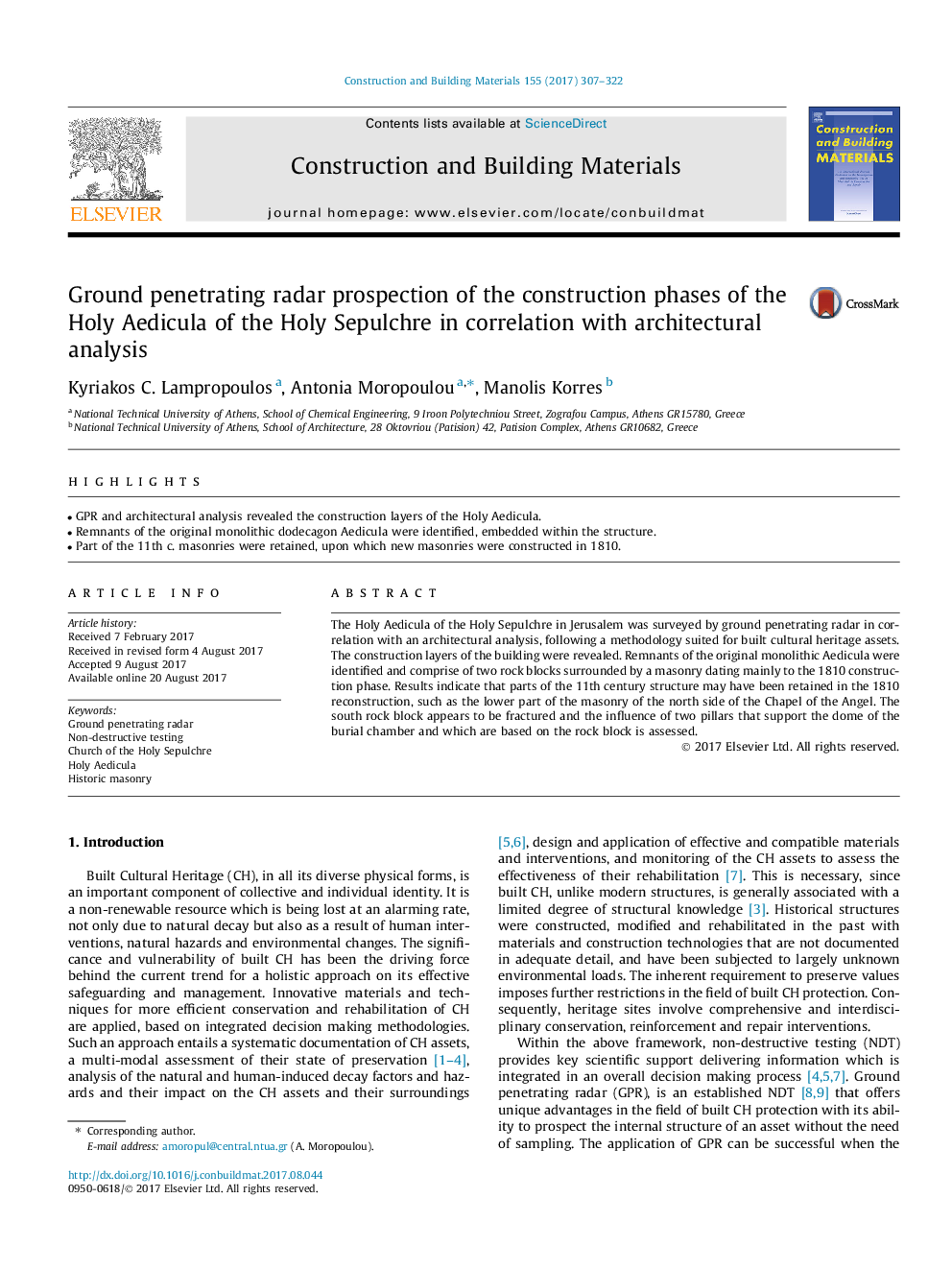| Article ID | Journal | Published Year | Pages | File Type |
|---|---|---|---|---|
| 4918080 | Construction and Building Materials | 2017 | 16 Pages |
Abstract
The Holy Aedicula of the Holy Sepulchre in Jerusalem was surveyed by ground penetrating radar in correlation with an architectural analysis, following a methodology suited for built cultural heritage assets. The construction layers of the building were revealed. Remnants of the original monolithic Aedicula were identified and comprise of two rock blocks surrounded by a masonry dating mainly to the 1810 construction phase. Results indicate that parts of the 11th century structure may have been retained in the 1810 reconstruction, such as the lower part of the masonry of the north side of the Chapel of the Angel. The south rock block appears to be fractured and the influence of two pillars that support the dome of the burial chamber and which are based on the rock block is assessed.
Related Topics
Physical Sciences and Engineering
Engineering
Civil and Structural Engineering
Authors
Kyriakos C. Lampropoulos, Antonia Moropoulou, Manolis Korres,
